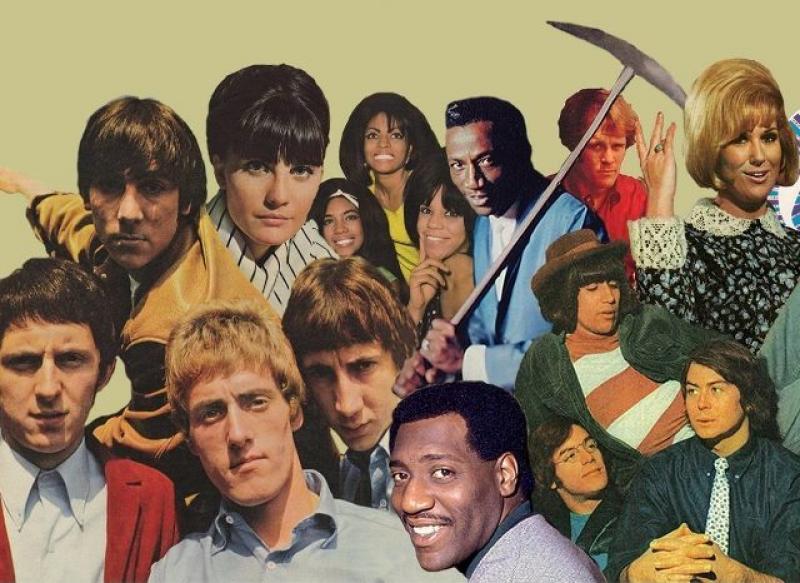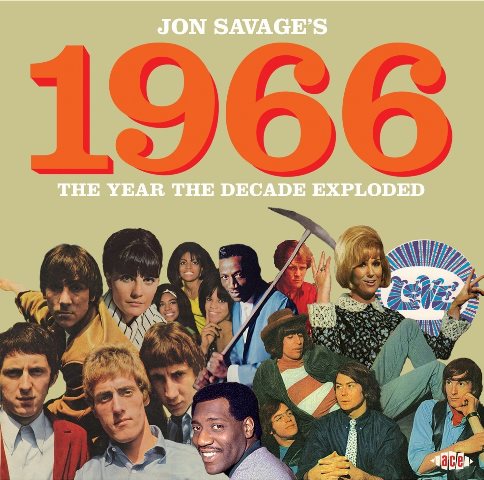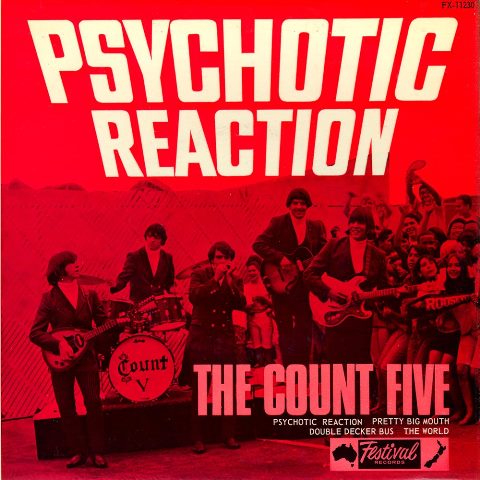Reissue CDs Weekly: Jon Savage's 1966 | reviews, news & interviews
Reissue CDs Weekly: Jon Savage's 1966
Reissue CDs Weekly: Jon Savage's 1966
Evocative and revealing soundtrack to the book pinpointing the year which irrevocably changed the world

January 1966 is a half a century back but some of the music released 50 years ago this month remains fresh, vital and timeless. With its biting invective and energy, Bob Dylan’s “Can You Please Crawl out of Your Window” will never lose its visceral edge. Dusty Springfield’s joyful, kinetic “Little by Little” is eternally alive. Author Jon Savage goes further and pinpoints the whole of 1966 as “the year that shaped the rest of the century”.
Savage explores his thesis in the eloquent and essential book 1966: The Year the Decade Exploded. It takes the year on a month-by-month basis, with a chapter dedicated to the music from each month and the issues a particular record or records illustrate. The period was not about albums and the pegs are singles. So, for example, chapter one is dedicated to January and CND, Protest and the Conspiracy of Silence. The relevant record is “The Quiet Explosion” by Bimingham’s The Uglys, a just-over two-and-a-half minute confirmation of the-then prevailing fears of an impending nuclear holocaust.
 The book examines drugs and pop art; black America and youth rebellion; the position of women and barely concealed gay ambits. Always, though, the way in is through music. The double-CD set Jon Savage's 1966: The Year the Decade Exploded soundtracks the book.
The book examines drugs and pop art; black America and youth rebellion; the position of women and barely concealed gay ambits. Always, though, the way in is through music. The double-CD set Jon Savage's 1966: The Year the Decade Exploded soundtracks the book.
Reading the book isn't necessary to enjoy the compilation’s 48 tracks. With annotation by Savage in the booklet and sequencing running chronologically by release date through 1966, the collection is, as he explains, “designed to stand alone – a mix of the familiar and the obscure, informed by memory”.
“The Quiet Explosion” kicks things off. It is, undeniably, a disquieting recording and one which was consigned to a B-side. “Each helpless voice is a quiet explosion” declares the band’s singer Steve Gibbons. The collection ends with Tim Hardin’s “Hang on to a Dream”, the unmediated sound of a defeat engendered by the recognition that ambition or looking forward may be pointless.
Much of 1966 is not this heavy. There is garage rock, nascent psychedelia, oddball one-offs, out-and-out pop, peppy instrumentals and various flavours of soul. The Who’s “Substitute” catches the almost-impossible to assimilate pace of 1966’s changes. As does their character-questioning “I’m a boy”. Four Tops’ “Reach Out I’ll be There” advocates the need for stability in a world moving faster than ever. The Velvet Underground’s debut single “I’ll Be Your Mirror” touches on solipsism and the search for identity. Even without The Beatles, Dylan and The Rolling Stones – none of whom are present for licensing reasons – the white-light speed of 1966 is captured.
 The year was musically radical and became more so as it went on. A kaleidoscopic aural barrage, The Yardbirds’ “Happenings Ten Years Time Ago” took guitar rock and lyrical themes of LSD-inspired regression to places they had never been before. As Savage points out in the book, early or proto-psychedelic music was not at all peaceful as it reflected or was inspired by the disturbance brought on by drugs. Witness The Count Five’s berserk Yardbirds rip-off “Psychotic Reaction”.
The year was musically radical and became more so as it went on. A kaleidoscopic aural barrage, The Yardbirds’ “Happenings Ten Years Time Ago” took guitar rock and lyrical themes of LSD-inspired regression to places they had never been before. As Savage points out in the book, early or proto-psychedelic music was not at all peaceful as it reflected or was inspired by the disturbance brought on by drugs. Witness The Count Five’s berserk Yardbirds rip-off “Psychotic Reaction”.
Black America's music was also mutating, but partly in response to social issues rather than changes in the nature of chemicals consumed. James Brown’s extraordinary 100-second “Tell Me That You Love Me” prefigures both funk and jungle, and cannot have sounded like music as such in 1966. It’s as if the needle were stuck in the groove. A high-velocity riff taken from a live recording repeats incessantly like blows breaking a door down while Brown’s looped vocal roars over the top like a riot control cop.
Most radical of all was a B-side by the past their sell-by-date British instrumental group The Tornados. With a completely different line-up to that of the 1962 “Telstar” hit band, their producer Joe Meek had them record “Do You Come Here Often?” It begins as a rinky-dink organ instrumental. Then, 2.15 in – long after anyone would have ceased paying attention – a pair of obviously camp men begin a bickering conversation. “Pyjamas are out as far as I’m concerned,” says one. They then size up a couple they’ve seen. This almost-secret reportage went way beyond any of Ray Davies’ nods to the gay. It was the sound of two queens – queens which the gay Meek would have known in the year before homosexuality was decriminalised.
Jon Savage's 1966: The Year the Decade Exploded is an eye-opener. It is great fun, too. As 2016 cannot be as momentous musically as 1966, this collection of bulletins from the frontline of rapid cultural change is a timely reminder that popular music should never stand still and always break boundaries. As Joe Tex puts it on Disc Two, “You Better Believe It Baby”.
Share this article
The future of Arts Journalism
You can stop theartsdesk.com closing!
We urgently need financing to survive. Our fundraising drive has thus far raised £49,000 but we need to reach £100,000 or we will be forced to close. Please contribute here: https://gofund.me/c3f6033d
And if you can forward this information to anyone who might assist, we’d be grateful.

Subscribe to theartsdesk.com
Thank you for continuing to read our work on theartsdesk.com. For unlimited access to every article in its entirety, including our archive of more than 15,000 pieces, we're asking for £5 per month or £40 per year. We feel it's a very good deal, and hope you do too.
To take a subscription now simply click here.
And if you're looking for that extra gift for a friend or family member, why not treat them to a theartsdesk.com gift subscription?
more New music
 Mogwai / Lankum, South Facing Festival review - rich atmospheres in a south London field
Two polished performances and an embarrassment of instruments
Mogwai / Lankum, South Facing Festival review - rich atmospheres in a south London field
Two polished performances and an embarrassment of instruments
 Album: Alison Goldfrapp - Flux
The synth diva in her comfort zone - maybe getting a little too comfortable, though
Album: Alison Goldfrapp - Flux
The synth diva in her comfort zone - maybe getting a little too comfortable, though
 Album: The Black Keys - No Rain, No Flowers
Ohio rockers' 13th album improves on recent material, but still below mainstream peak
Album: The Black Keys - No Rain, No Flowers
Ohio rockers' 13th album improves on recent material, but still below mainstream peak
 Wilderness Festival 2025 review - seriously delirious escapism
A curated collision of highbrow hedonism, surreal silliness and soulful connection
Wilderness Festival 2025 review - seriously delirious escapism
A curated collision of highbrow hedonism, surreal silliness and soulful connection
 Album: Ethel Cain - Willoughby Tucker, I'll Always Love You
Relatively straightforward songs from the Southern Gothic star - with the emphasis on 'relatively'
Album: Ethel Cain - Willoughby Tucker, I'll Always Love You
Relatively straightforward songs from the Southern Gothic star - with the emphasis on 'relatively'
 Album: Black Honey - Soak
South Coast band return with another set of catchy, confident indie-rockin'
Album: Black Honey - Soak
South Coast band return with another set of catchy, confident indie-rockin'
 Album: Molly Tuttle - So Long Little Miss Sunshine
The US bluegrass queen makes a sally into Swift-tinted pop-country stylings
Album: Molly Tuttle - So Long Little Miss Sunshine
The US bluegrass queen makes a sally into Swift-tinted pop-country stylings
 Music Reissues Weekly: Chip Shop Pop - The Sound of Denmark Street 1970-1975
Saint Etienne's Bob Stanley digs into British studio pop from the early Seventies
Music Reissues Weekly: Chip Shop Pop - The Sound of Denmark Street 1970-1975
Saint Etienne's Bob Stanley digs into British studio pop from the early Seventies
 Album: Mansur Brown - Rihla
Jazz-prog scifi mind movies and personal discipline provide a... complex experience
Album: Mansur Brown - Rihla
Jazz-prog scifi mind movies and personal discipline provide a... complex experience
 Album: Reneé Rapp - Bite Me
Second album from a rising US star is a feast of varied, fruity, forthright pop
Album: Reneé Rapp - Bite Me
Second album from a rising US star is a feast of varied, fruity, forthright pop
 Album: Cian Ducrot - Little Dreaming
Second album for the Irish singer aims for mega mainstream, ends up confused
Album: Cian Ducrot - Little Dreaming
Second album for the Irish singer aims for mega mainstream, ends up confused
 Album: Bonniesongs - Strangest Feeling
Intriguing blend of the abstract, folkiness, grunge and shoegazing from Sydney
Album: Bonniesongs - Strangest Feeling
Intriguing blend of the abstract, folkiness, grunge and shoegazing from Sydney

Add comment